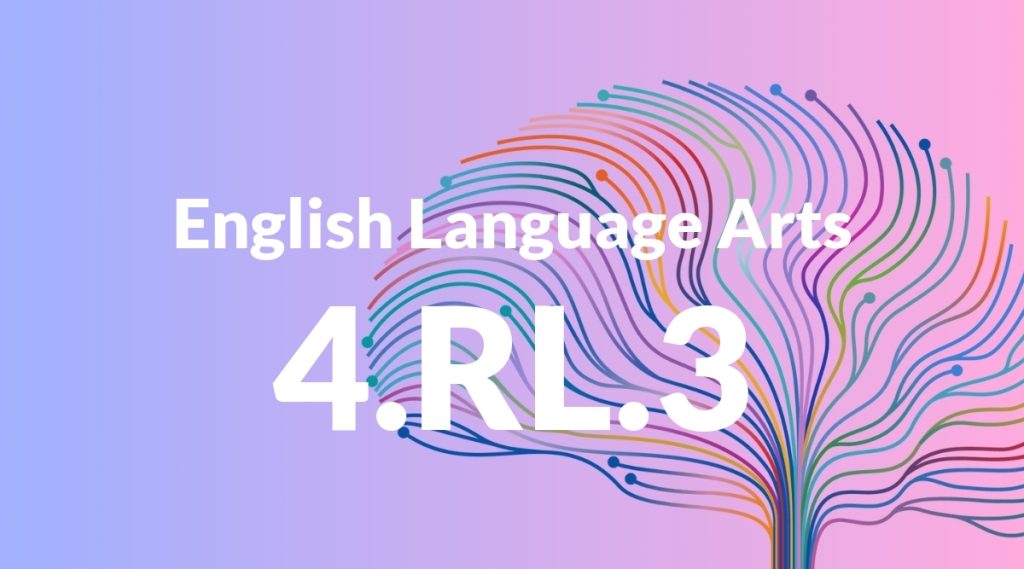Standard: 4.RL.3 – Describe in depth a character, setting, or event in a story or drama, drawing on specific details in the text (e.g., a character’s thoughts, words, or actions).
Grade level: Grade 4
Subject: English Language Arts
Domain: Reading: Literature
Teacher Overview
This standard focuses on the detailed analysis of characters, settings, and events in literature. It is important because it helps students develop a deeper understanding of texts, which is crucial for advanced comprehension and critical thinking skills. Students should be familiar with identifying characters, settings, and events in a story. They should also have some experience summarizing texts and understanding basic character motivations.
After mastering this standard, students will be able to compare and contrast characters, settings, or events in different texts and analyze how characters evolve and settings influence the plot.
Common Misconception 1
Students often think that describing a character means only talking about what they look like. This is incorrect because a thorough description includes a character’s thoughts, actions, and motivations.
Intervention 1
Use graphic organizers that prompt students to consider and record a character’s thoughts, actions, and motivations, along with their physical traits.
Common Misconception 2
Students might believe that the setting is just the time and place where the story happens. This is incorrect because the setting also includes sensory details and influences the story’s mood and events.
Intervention 2
Teach students to describe settings using sensory details and discuss how the setting influences the mood and events of the story.
Prerequisite Knowledge
Students should be able to identify basic story elements such as characters, settings, and major events. They should also be familiar with summarizing a text and understanding character motivations.
Subsequent Knowledge
After mastering this standard, students will be able to compare and contrast characters, settings, or events in different texts. They will also be able to analyze how characters change over time and how settings influence the plot.
Instructional Activities
- Create character maps for main characters in a book
- Write detailed setting descriptions using sensory details
- Role-play events from a story to understand character motivations
- Compare and contrast characters from different stories
- Discuss how the setting influences the plot in a group discussion




